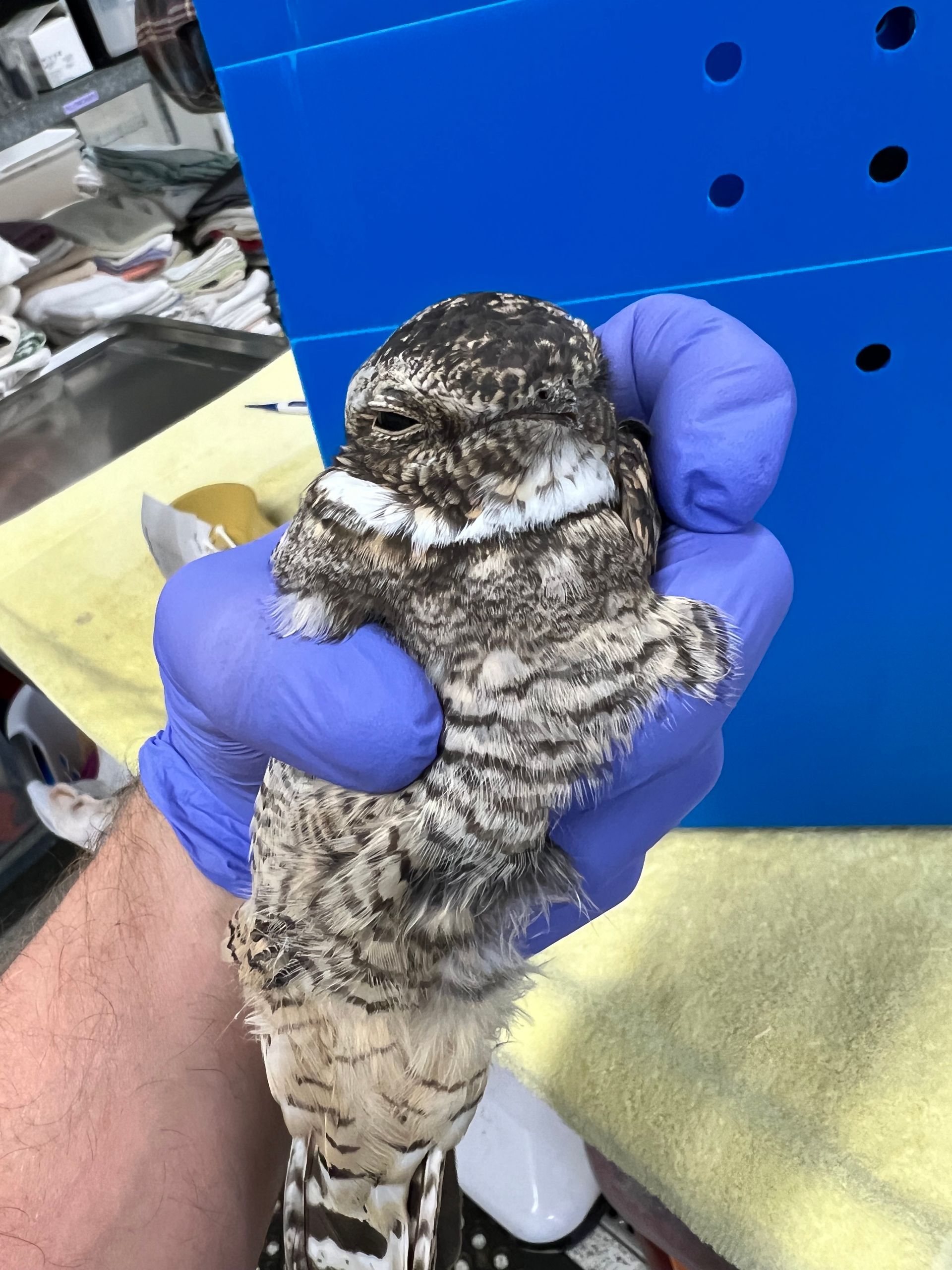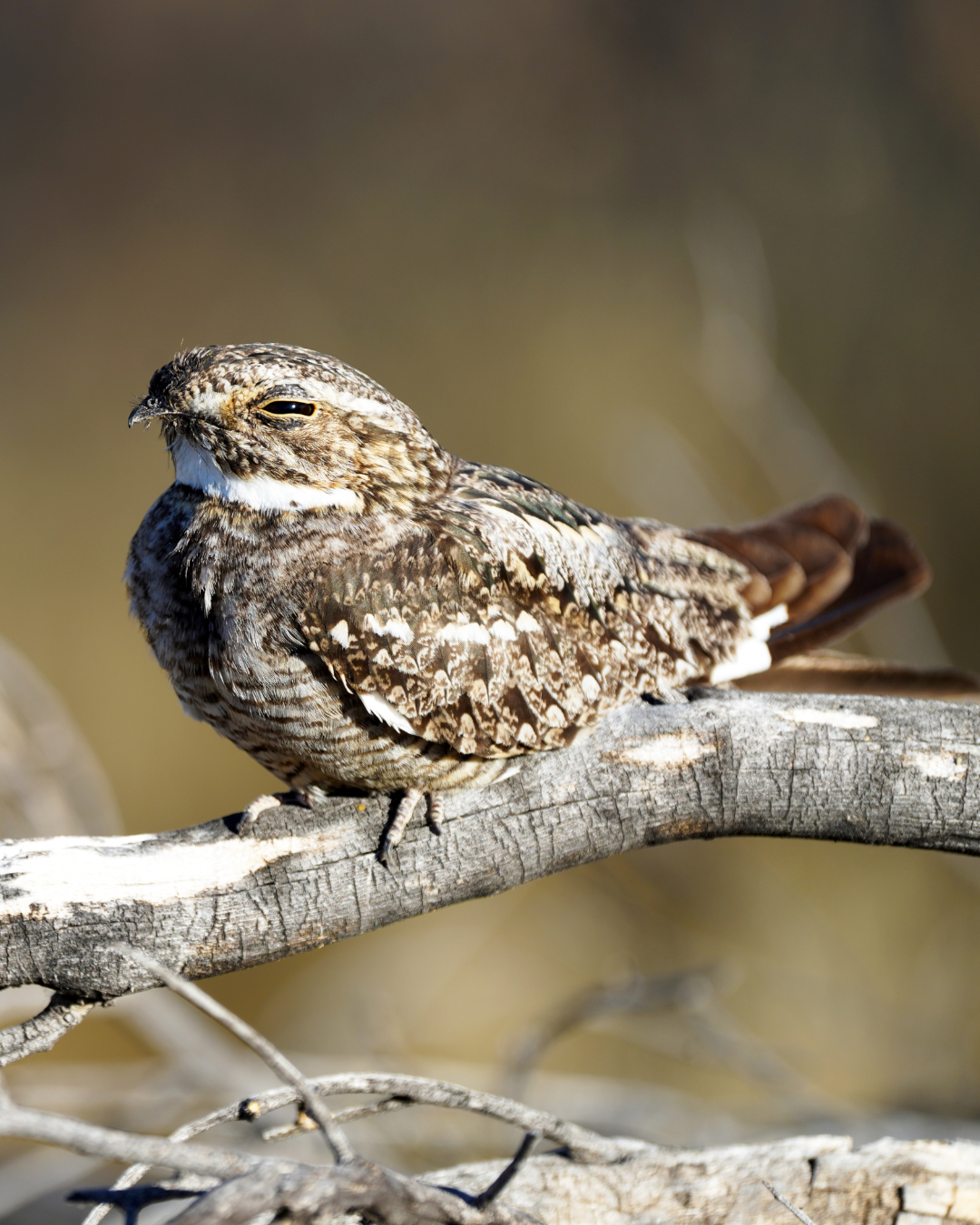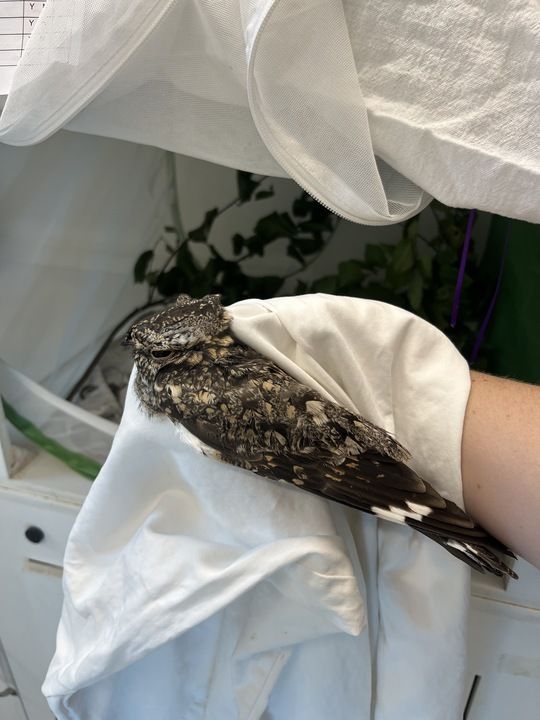
Species:
Lesser Nighthawk
Time in Care:
44 Days
Status:
Released
On January 1st, 2025, SBWCN welcomed its first patient of the new year, an adult Lesser Nighthawk (LENH). LENH-1 was brought in as a suspected window strike, he was found on the ground not flying away from capture and with some drooping feathers on his side. After intake, other clues pointing to the nighthawk striking a window came to light. He had a crack along his beak which was monitored closely and he was seen squinting in one eye, both signs of trauma around his head. Perhaps a consequence of his injury, he was also severely dehydrated.
Not backing down from the challenge, SBWCN staff took him in and gave him a mix of pain and supportive medication along with fluids. He was scheduled for a vet visit to assess the beak injury which was deemed minor after observation and able to heal if left alone. After only five days in care and two successful test flights in an aviary, LENH was ready to be released, setting an auspicious and exciting event for our staff welcoming in the new year!
Lesser Nighthawk Facts:
- Males and females look similar, but males often have more prominent white markings on wings and tail.
- Lesser nighthawks are usually found in Southwestern United States, Mexico, Central America, and parts of South America and prefer open, arid environments such as deserts, scrublands, grasslands. Santa Barbara and Ventura Counties are right at the northernmost part of the Lesser nighthawks range, making them a rare sight.
- Lesser Nighthawks in California are crepuscular, meaning they are most active in the hours around sunset and sunrise.
- They lay their eggs directly on the ground and do not build nests. Because of this their eggs have adapted to blend in with the humus.





